nds a room with richness, depth, and a quiet confidence that lighter timbers rarely match. Designers keep returning to its chocolate-brown tones because they camouflage daily wear, anchor almost any palette, and feel timeless even as trends shift toward greener, more sustainable choices. Recent reports show walnut’s popularity climbing alongside wider planks, low-sheen finishes, and patterned layouts, proving the species can flex from classic to contemporary without losing its sophisticated soul. Let these twenty room-specific ideas spark your next flooring decision—each one combines practical guidance with a dash of inspiration, inviting you to picture how dark walnut floors could elevate your own home.
1. Dark Walnut Floor Warms a Classic Living Room
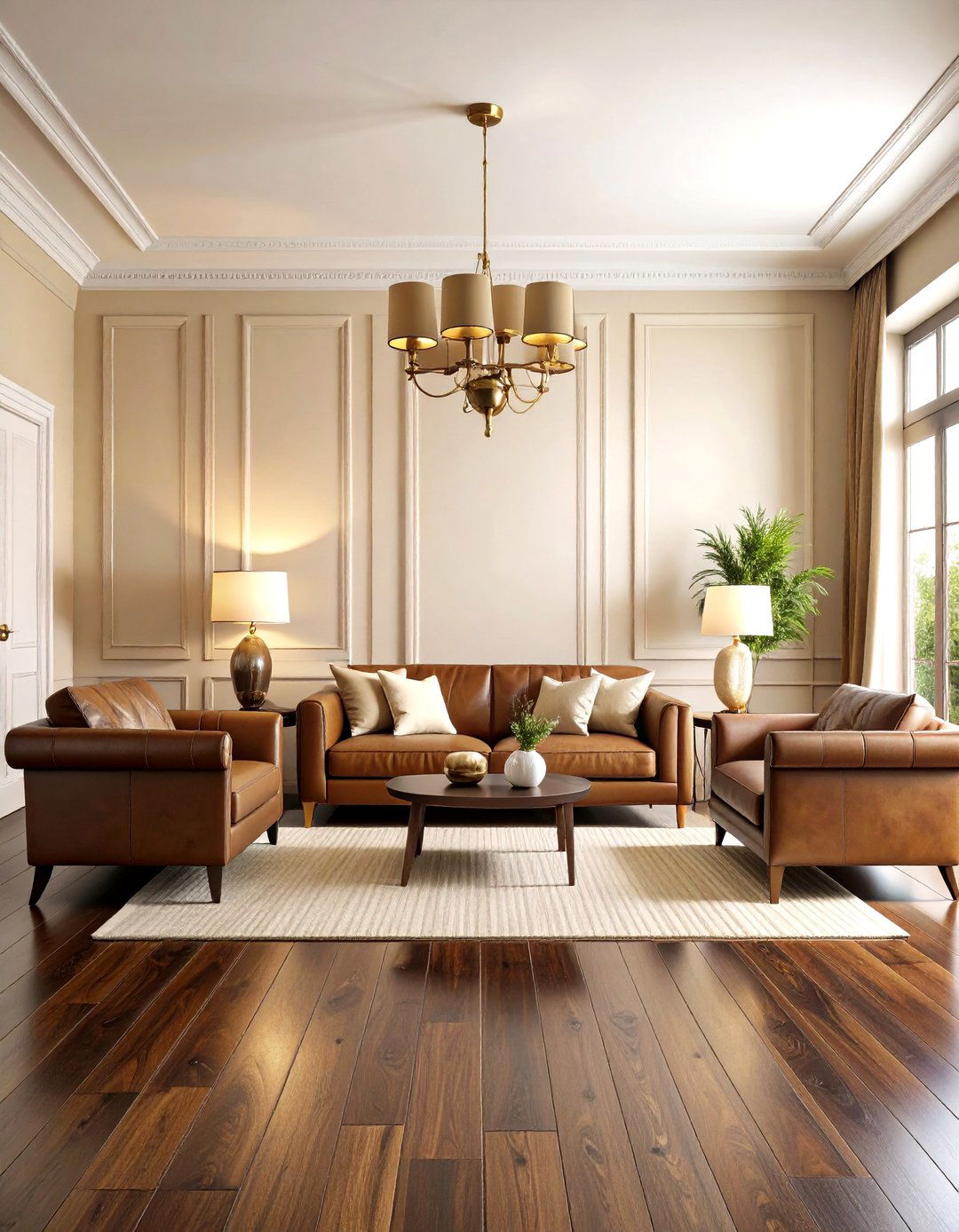
The gentle glow of a dark walnut floor instantly softens a living room, adding the “cozy but polished” effect so many homeowners crave. Recent trend analyses highlight mid-brown walnuts as 2024’s favorite for transitional spaces, because the shade bridges traditional and modern furnishings with ease. Pair the floor with creamy walls—designers call white the effortless partner that keeps walnut from feeling heavy Livingetc. Layer leather seating and brushed-brass lamps; both materials echo walnut’s natural warmth, amplifying the welcoming vibe. To maintain that silky look, sweep weekly and use felt pads under coffee-table legs—simple habits experts say prolong hardwood life by years Homes & Gardens.
2. Sleek Matte Dark Walnut Floor Modernizes a Kitchen
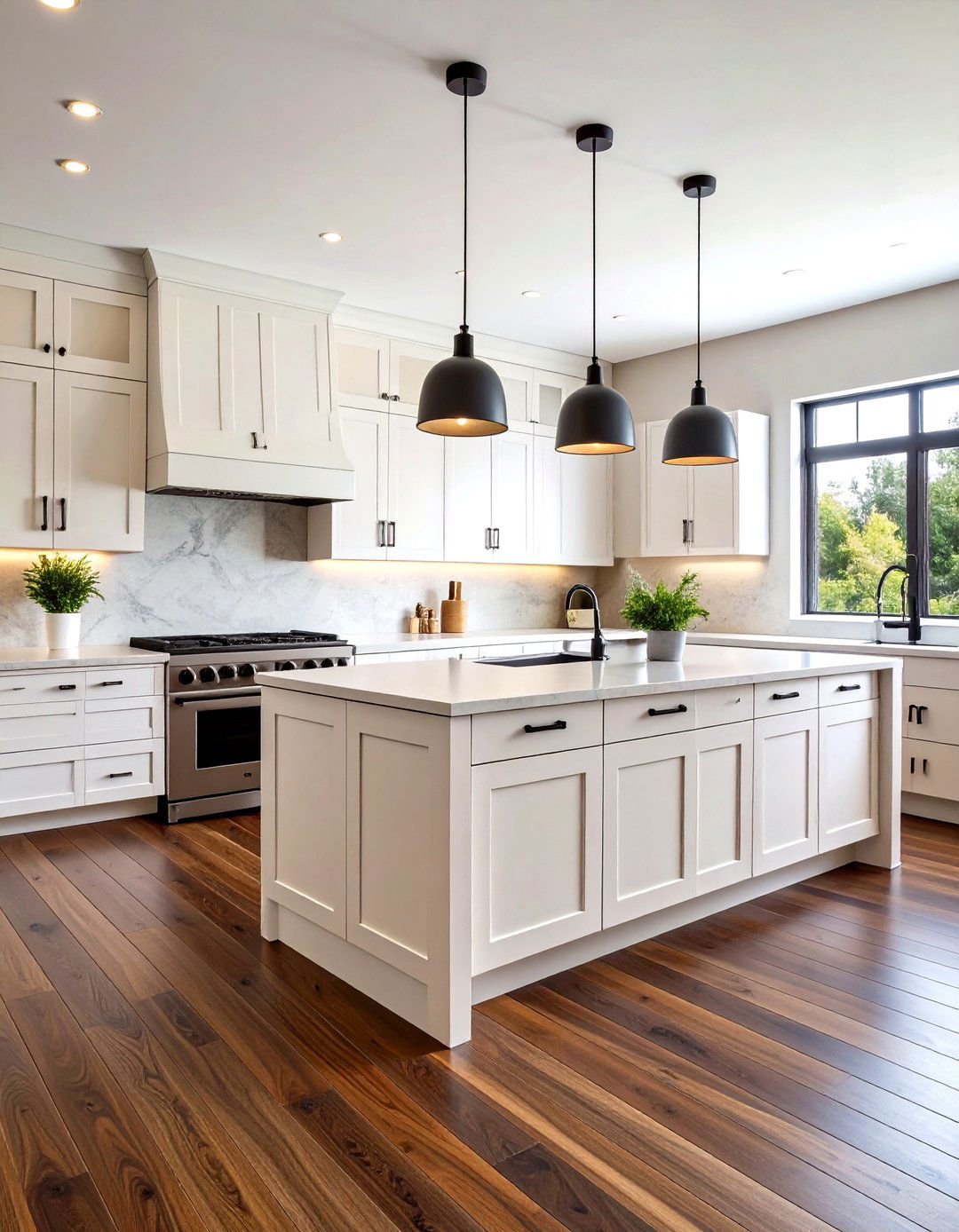
Unlike glossy boards that mirror overhead fixtures, a matte dark walnut floor quietly absorbs light, letting gleaming quartz counters and stainless hardware shine. Flooring specialists note that matte hides scuffs better than satin, an advantage in busy kitchens where stools scrape and kids race for snacks. Balance the subdued sheen with bright white cabinetry and jet-black pulls for crisp contrast; this high-low pairing is topping inspiration boards in contemporary remodels Livingetc. Keep a pH-neutral cleaner on hand—acidic sprays can strip the low-gloss finish—then damp-mop weekly to lift spills before they stain the open grain.
3. Wide-Plank Dark Walnut Floor Opens an Airy Great Room
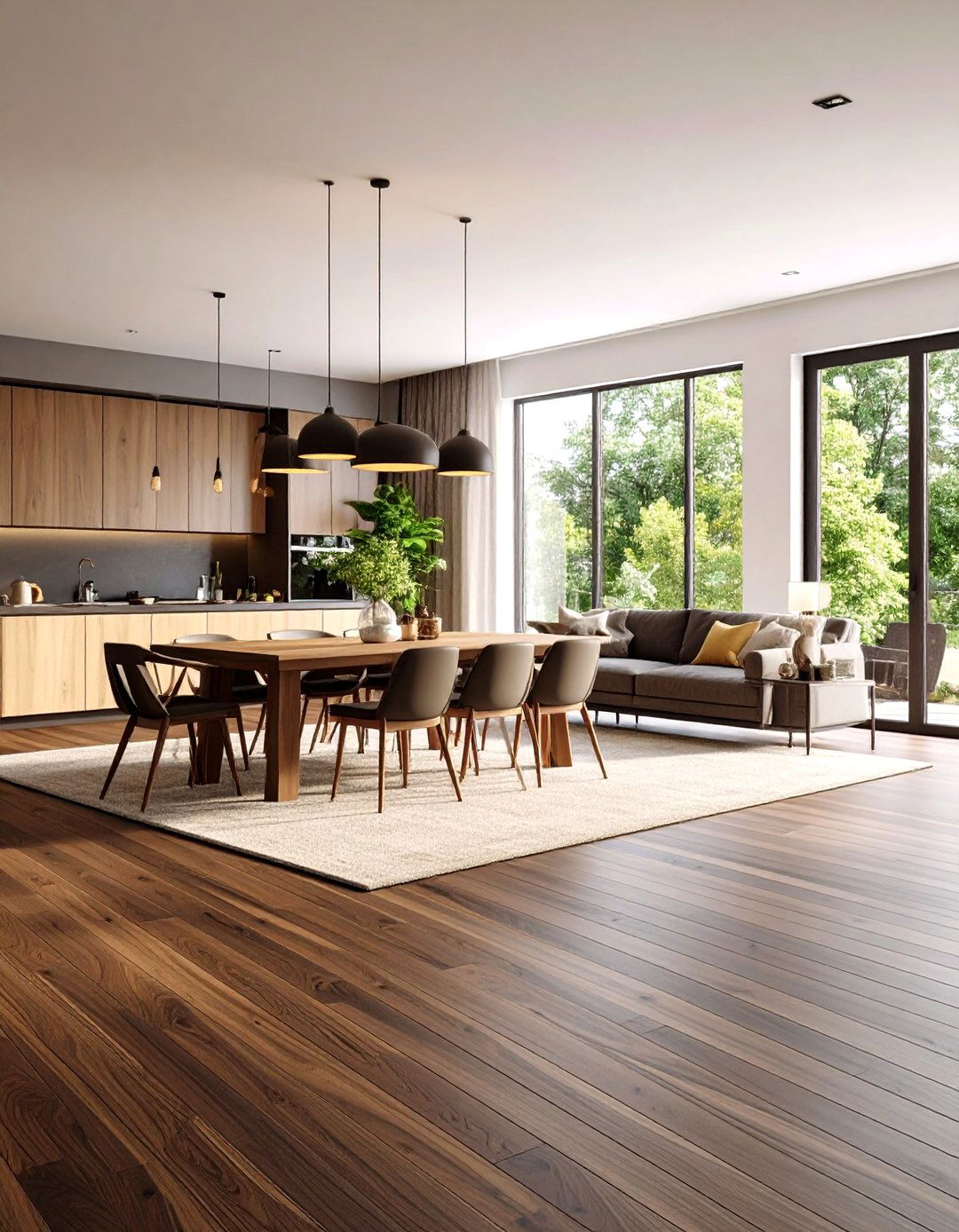
For expansive, open-concept layouts, designers increasingly recommend eight-inch-wide dark walnut planks that showcase the timber’s flowing grain in fewer seams. The broader boards trick the eye into reading the floor as one continuous plane, making living, dining, and kitchen zones feel cohesive. Plank edges micro-beveled at the factory add subtle shadow lines that emphasize length, while engineered cores tame seasonal movement. Finish the scene with oversized area rugs that leave a two-foot walnut border—this framing effect visually “floats” furniture clusters without breaking up the spacious vibe.
4. Herringbone Dark Walnut Floor Enlarges a Petite Foyer
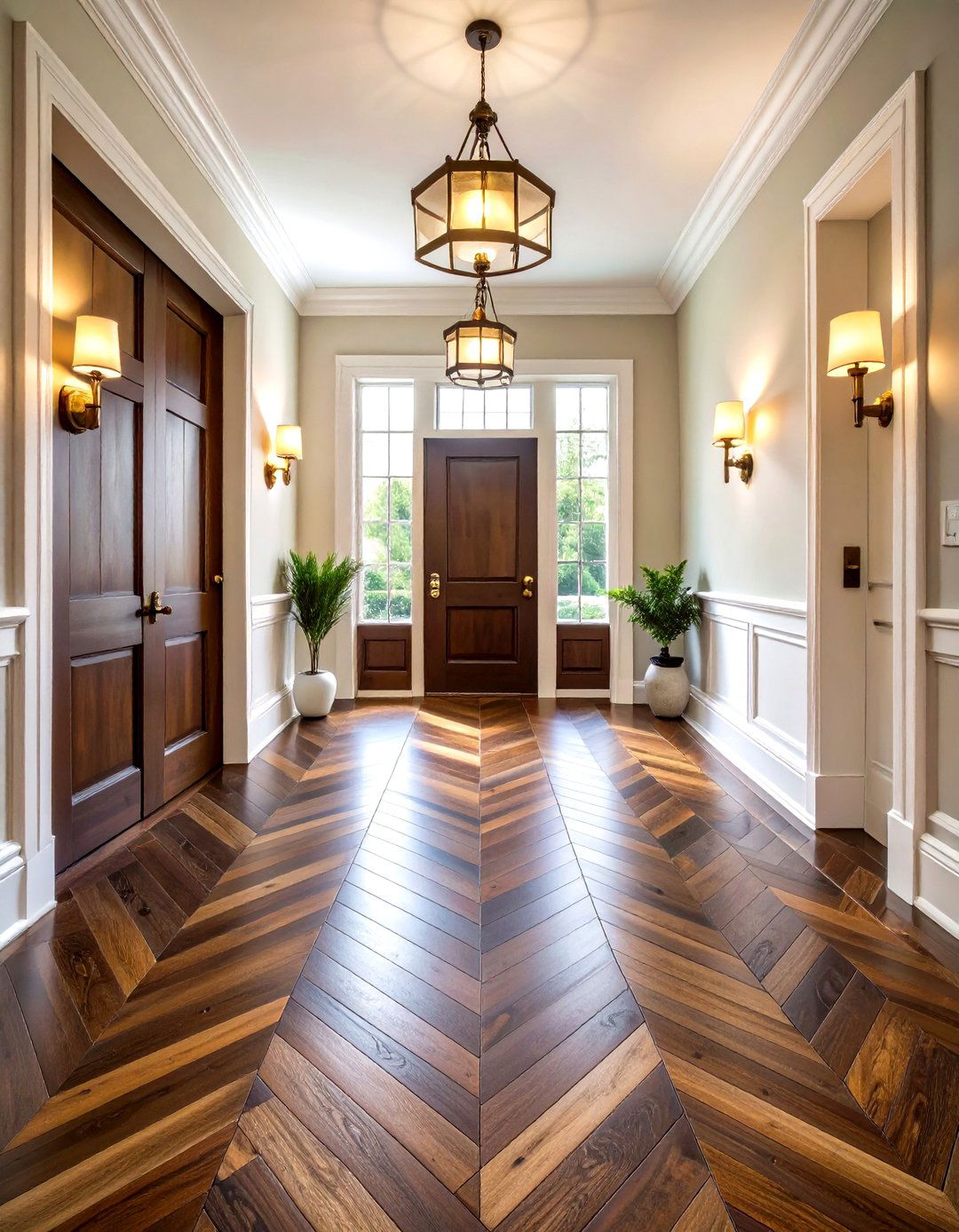
Looking to give a small entryway a grand first impression? A herringbone dark walnut floor lays zig-zag lines that guide the eye outward, creating an illusion of width according to pattern experts Better Homes & Gardens. The classic motif injects architectural interest before guests even glimpse the rest of the house, yet its right-angle joints remain timeless. To keep installation costs reasonable, run straight boards along the foyer perimeter; this border acts as a built-in frame, accelerating installation and using less waste. Soft brass wall sconces pick up walnut’s caramel undertones and bounce light across the angled layout.
5. Satin-Sheen Dark Walnut Floor Stands Up in a Nursery

Baby toys, wheeled walkers, and endless bottle spills demand a finish that’s forgiving yet gentle. A satin-sheen dark walnut floor hits the sweet spot: glossier than matte for easier wipe-ups, but still low enough to mask micro-scratches that come with playtime Panel Town. Choose water-based polyurethane with under-5-VOC ratings to protect indoor air quality while little lungs develop. Add a thick cotton area rug beneath the crib for extra warmth, leaving walnut edges visible to keep the room feeling grounded rather than cluttered with fabric.
6. Dark Walnut Floor Anchors a Minimalist Home Office
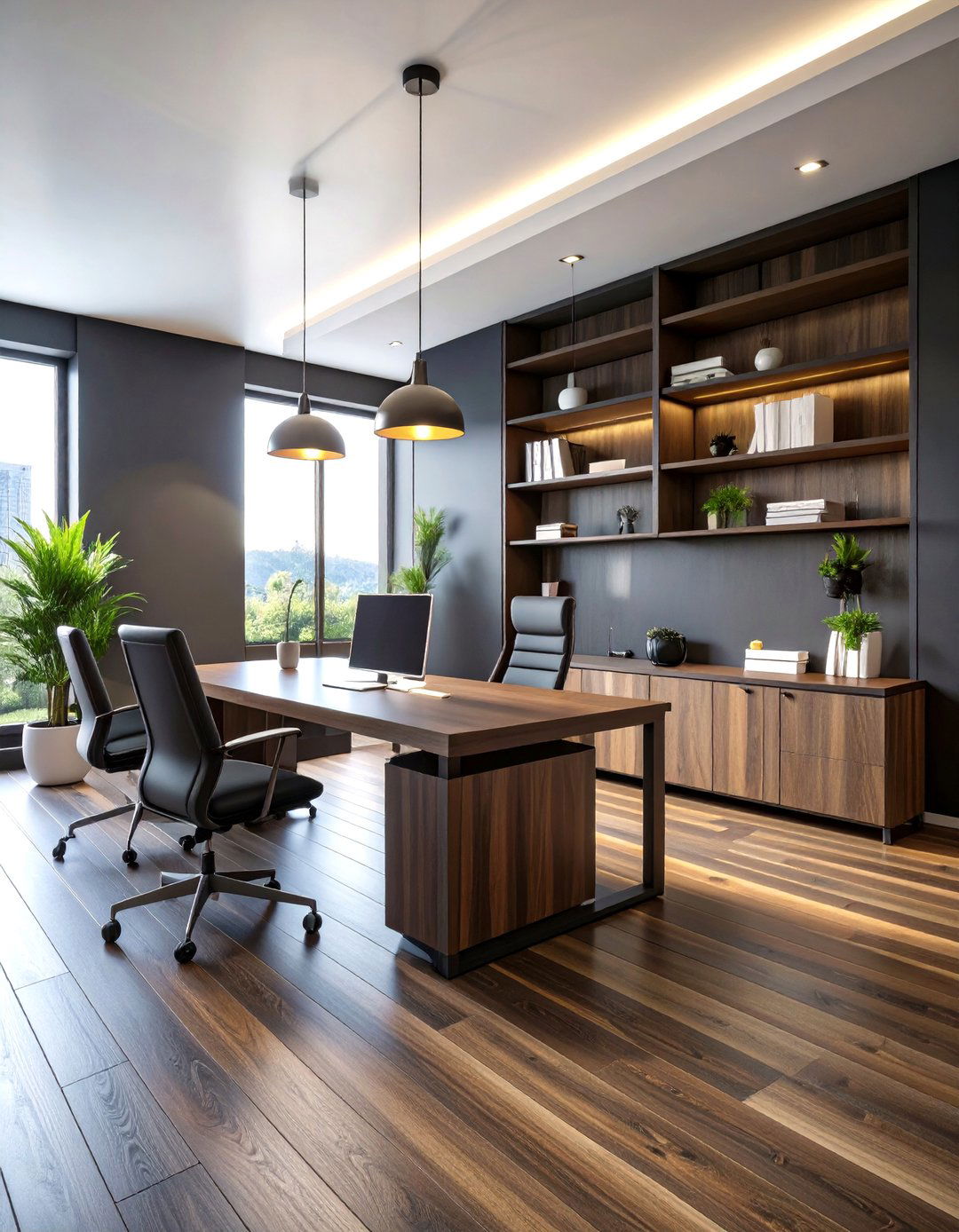
A charcoal accent wall paired with a dark walnut floor can turn a spare bedroom into a focus-boosting workspace. Design pros list warm whites, cool charcoals, and muted sages as the most flattering wall colors for dark wood because they highlight walnut’s complexity without competing Livingetc. Floating shelves in black metal echo the floor’s espresso streaks, while slimline LED desk lamps prevent glare on digital screens. Add a clear chair mat or low-pile rug under the caster chair to curb finish wear; felt edge trim stops the mat from digging into soft growth rings.
7. Radiant-Ready Dark Walnut Floor Warms a Spa-Style Bathroom

Walnut’s dimensional stability ranks among the best species for low-temperature radiant heat, provided installers respect moisture limits, according to flooring retrofit guides ReallyCheapFloors. Opt for engineered dark walnut floor planks rated for underfloor systems; their cross-layered core resists cupping as temperatures rise. Seal plank ends with elastomeric adhesive during install to block steam infiltration, then top the finish with a hard-wax oil that tolerates humidity. Pair the chocolate boards with white subway tiles on the walls and matte-black fixtures—together they create a boutique-hotel vibe while toes stay toasty.
8. FSC-Certified Dark Walnut Floor Creates a Conscious Bedroom Retreat
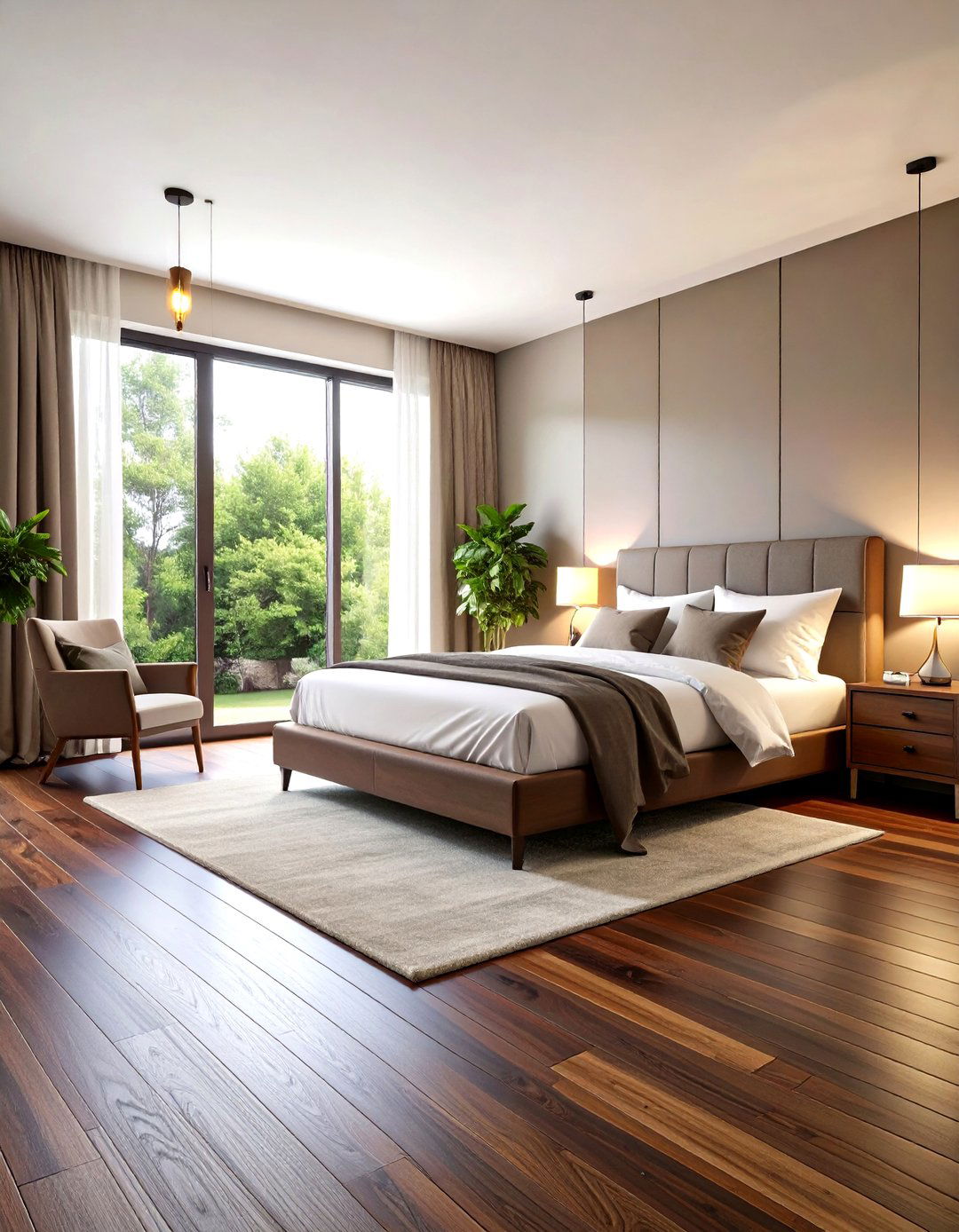
Homeowners seeking eco-cred can sleep soundly on dark walnut floors sourced from responsibly managed forests. Retailers of FSC-certified planks emphasize low-formaldehyde adhesives and natural oil finishes, aligning with green-building programs Green Building Supply. Walnut’s deep hues make bed linens pop—think crisp white percale or moss-green linen—and reduce the need for heavy drapery because the floor alone supplies a cocooning feel. Lay the boards parallel to the longest bedroom wall; this elongates the room and showcases walnut’s cathedral grain for a calming, spa-like aura each morning.
9. Distressed Dark Walnut Floor Delivers Farmhouse-Chic Dining
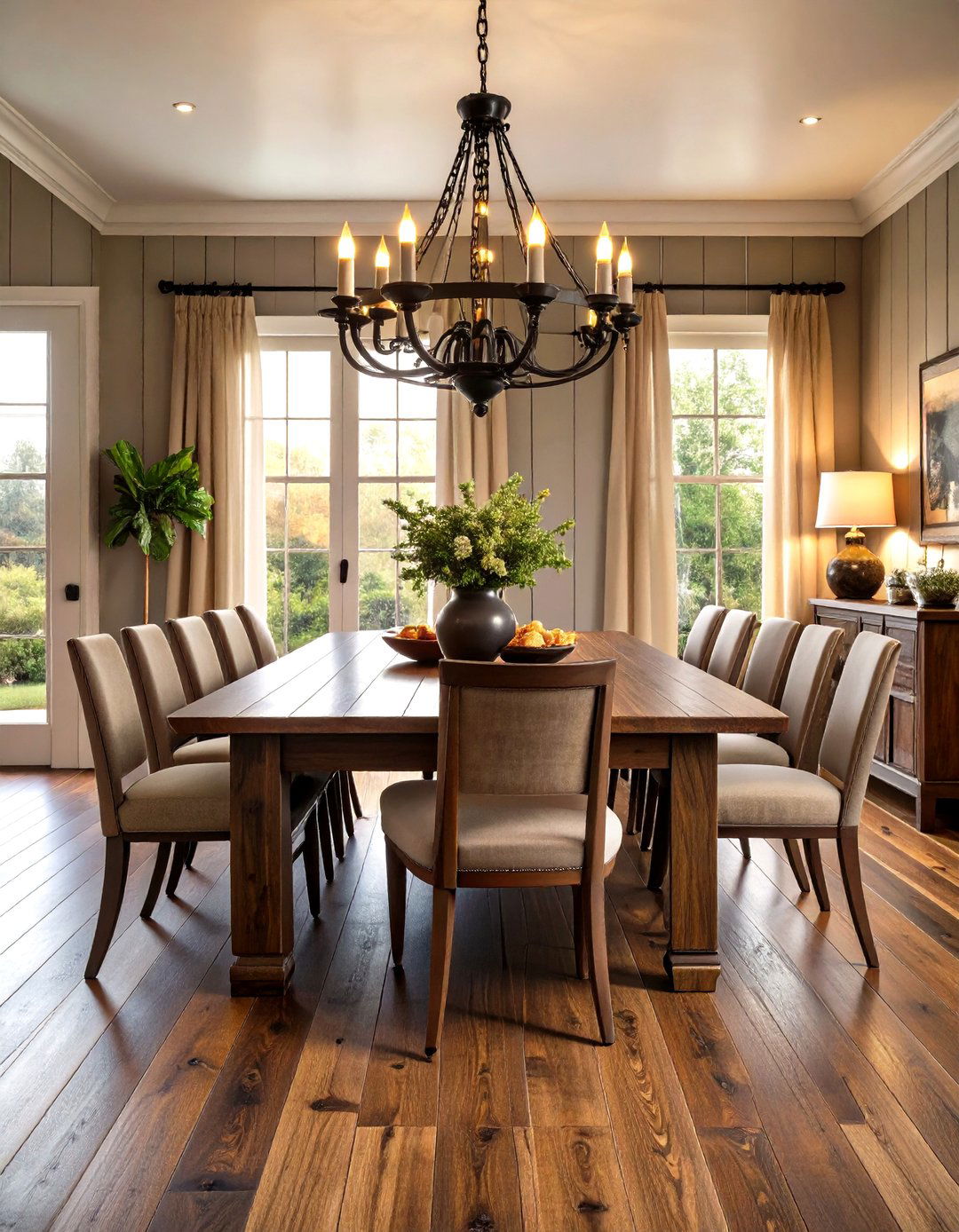
Modern farmhouse décor may be synonymous with reclaimed oak, but a hand-brushed dark walnut floor offers the same rustic texture in richer tones. Manufacturers blending walnut into “contemporary farmhouse” collections tout its mellow grain and occasional purple undertones as a sophisticated twist on country style. Lightly wire-brushed surfaces hide chair scuffs between family dinners, while beveled edges emphasize plank individuality. Match with shiplap walls painted soft greige and an oversized iron chandelier for contrast; together they balance refinement and casual ease.
10. Scandinavian Contrast with Dark Walnut Floor in a Loft
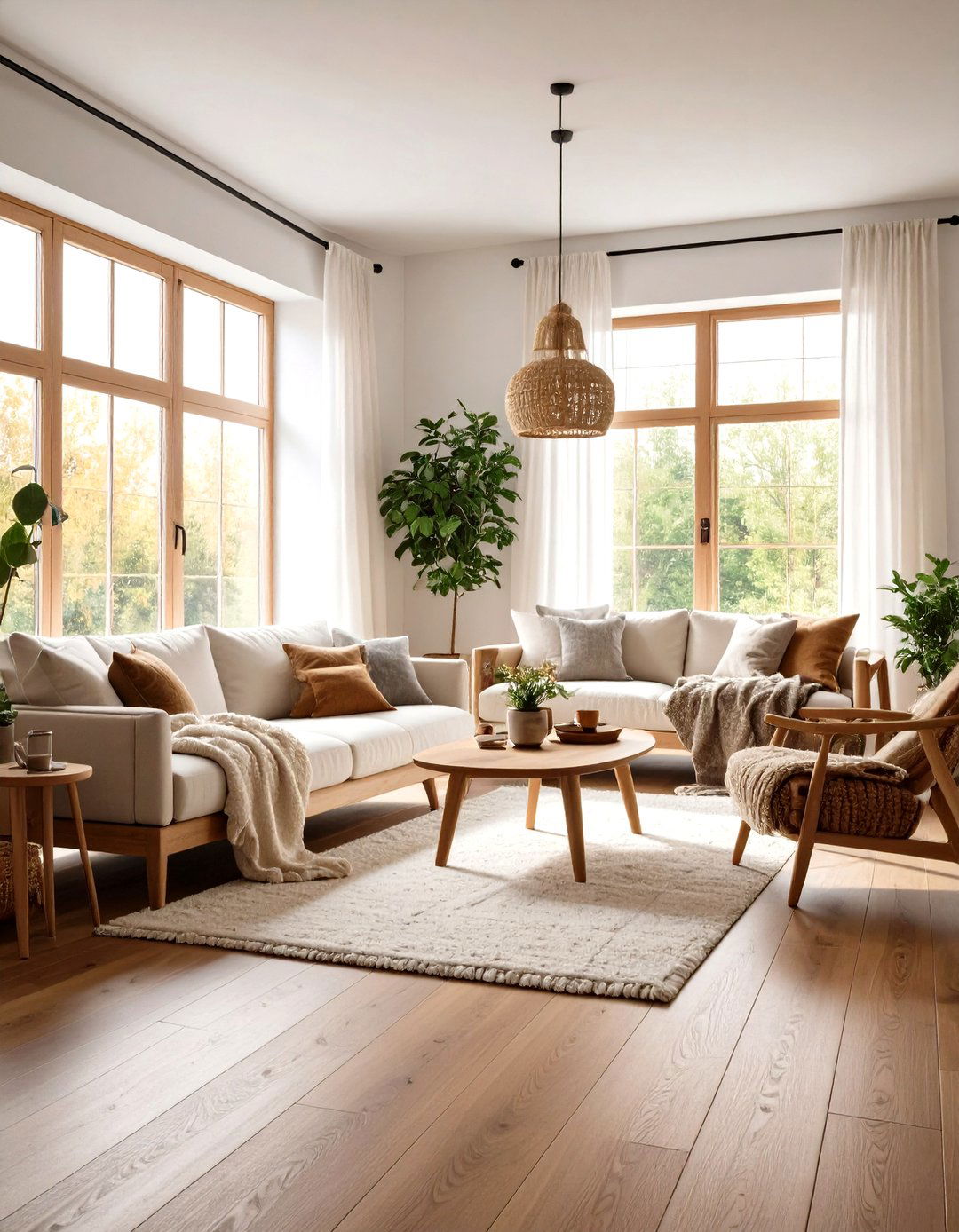
Scandi interiors thrive on light walls and natural textures, yet a dark walnut floor can be the grounding counterpart that keeps airy schemes from feeling sterile. Designers rank walnut among the best companions for gallery-white paint because the wood’s warmth offsets any clinical chill Livingetc. Add bleached-oak furniture and chunky wool throws to bridge the tonal gap; mid-brown walnut prevents the palette from sliding into monotone. Wide expanses of glass amplify daylight, and walnut’s low reflectivity helps control glare, enhancing that coveted Nordic calm.
11. Layered Rugs Protect a Dark Walnut Floor Reading Nook
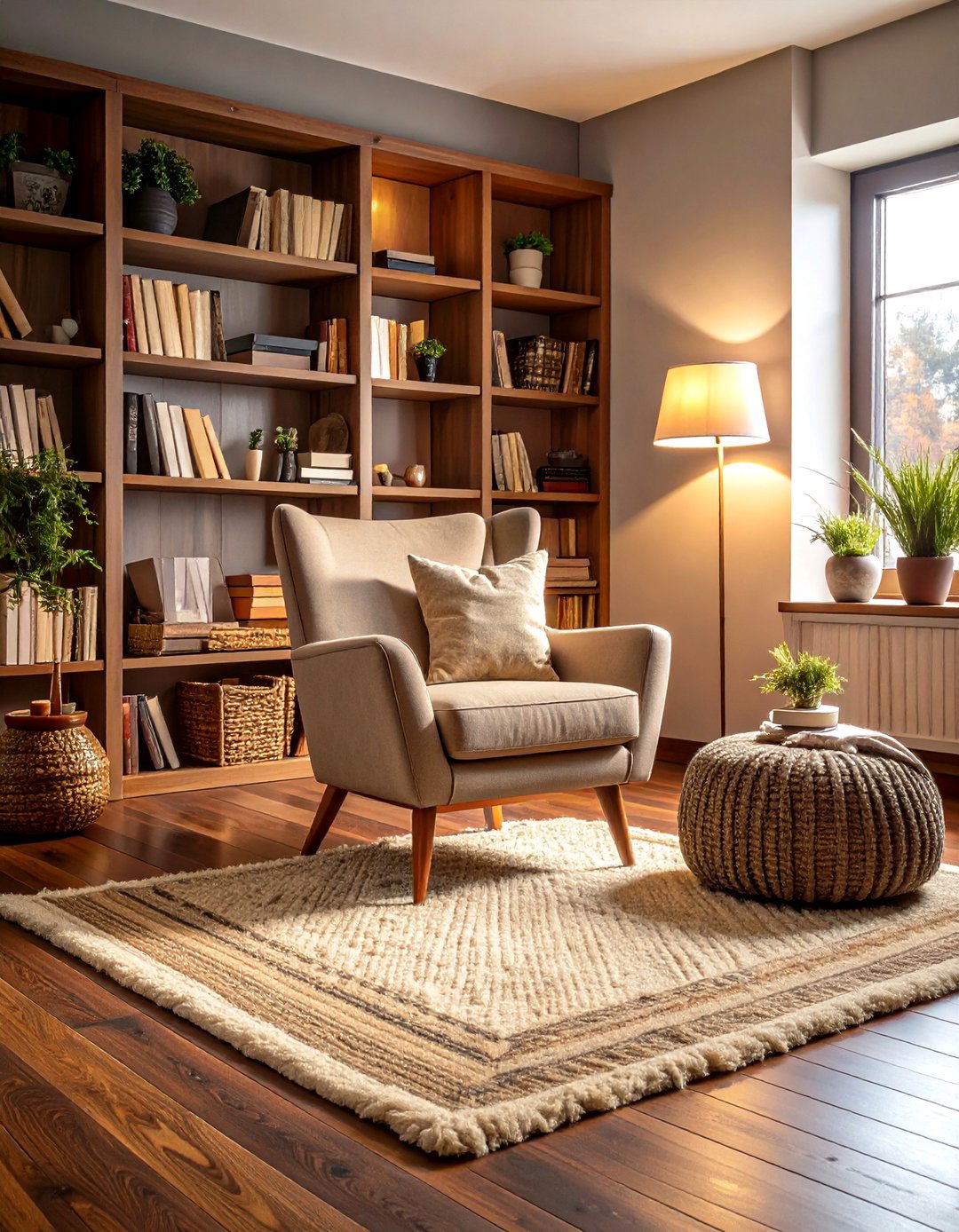
Certainly, sliding armchairs and constant foot traffic in a cozy reading corner can etch lines into a finish over time, but layered area rugs act as stylish armor. Flooring experts warn that dragging heavy furniture or skipping felt pads are leading causes of premature scratches—simple habits to correct for longer floor life Homes & Gardens. Begin with a natural-fiber jute rug that breathes, topping it with a patterned wool kilim to define seating. Allow four inches of dark walnut floor to show around the edge; the exposed border frames the nook like a picture.
12. Continuous Dark Walnut Floor Unifies a Studio Apartment
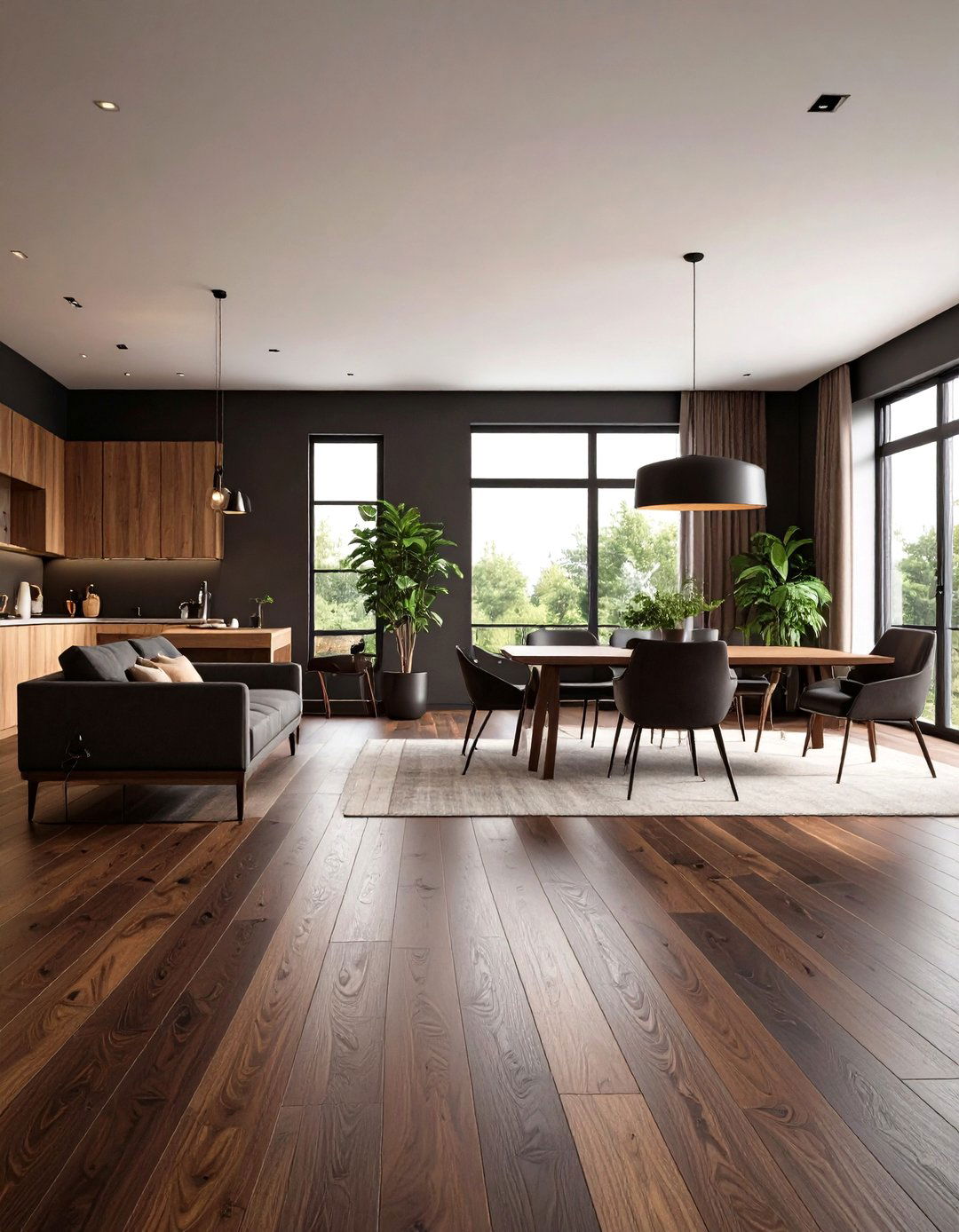
Open-plan studios benefit from running one dark walnut floor across every zone, a designer trick that makes compact layouts feel bigger by eliminating visual breaks. Trend roundups tout walnut’s mid-brown neutrality as the perfect bridge between a sleeping alcove and a kitchenette clad in mixed materials. Use furniture placement—rather than threshold strips—to delineate functions; a sofa’s back can stand in for a wall without interrupting the plank flow. Install planks parallel to natural light to emphasize length and bounce subtle warmth across polished concrete ceilings.
13. Pet-Friendly Finish on Dark Walnut Floor in a Family Room
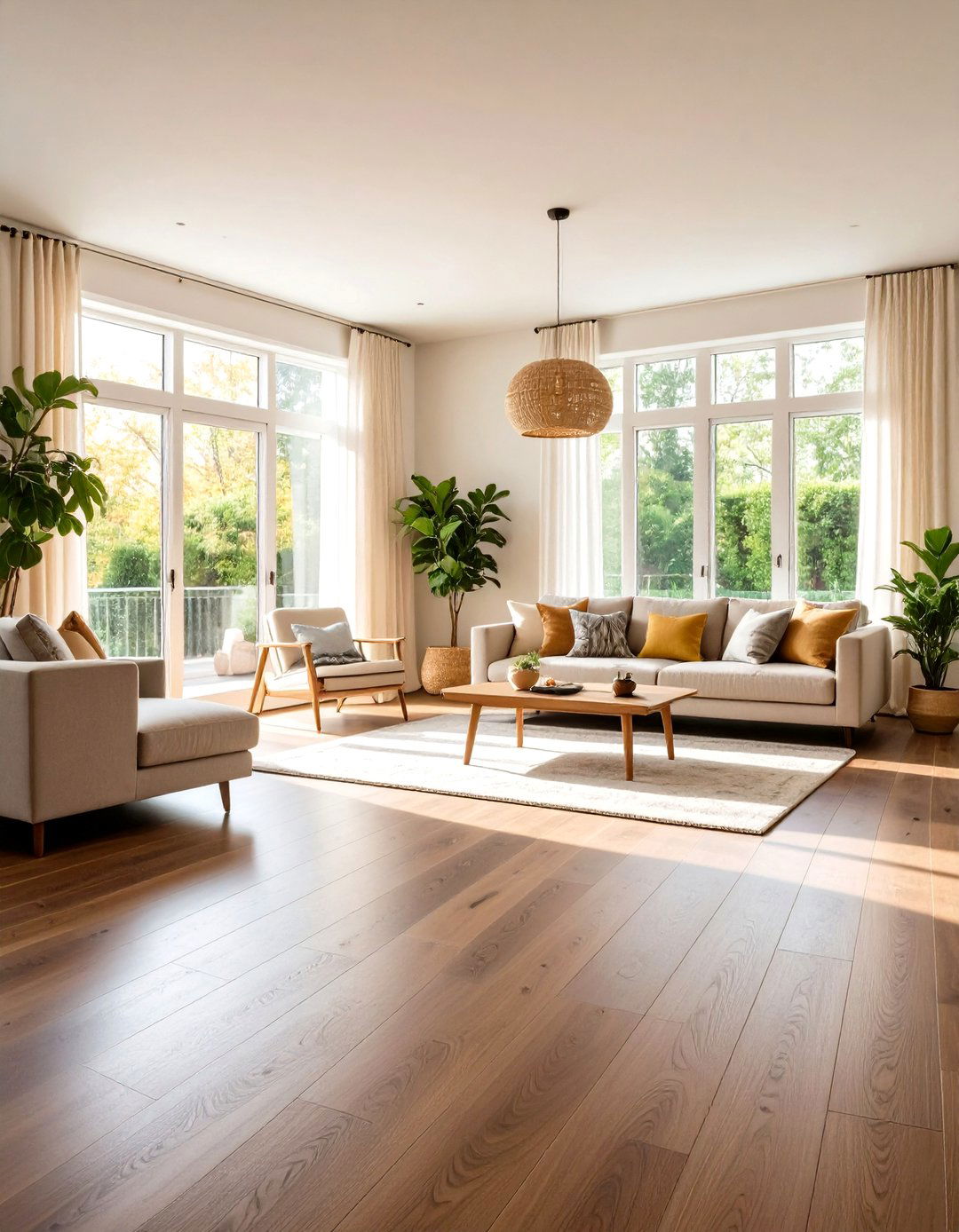
Surprisingly, dark walnut floors can coexist with rambunctious pets when sealed in scratch-resistant polyurethane and paired with mindful habits. Experts caution that untrimmed claws and harsh cleaners are common culprits, advising felt-bottom toys and pH-balanced soaps instead Homes & Gardens. Choose a satin sheen that disguises nail marks better than high-gloss while still offering wipe-clean convenience. Strategically place washable runners along active fetch routes, exposing the walnut edges so the room still celebrates its luxe foundation even in the midst of playtime chaos.
14. Custom-Milled Dark Walnut Floor Climbs a Statement Staircase
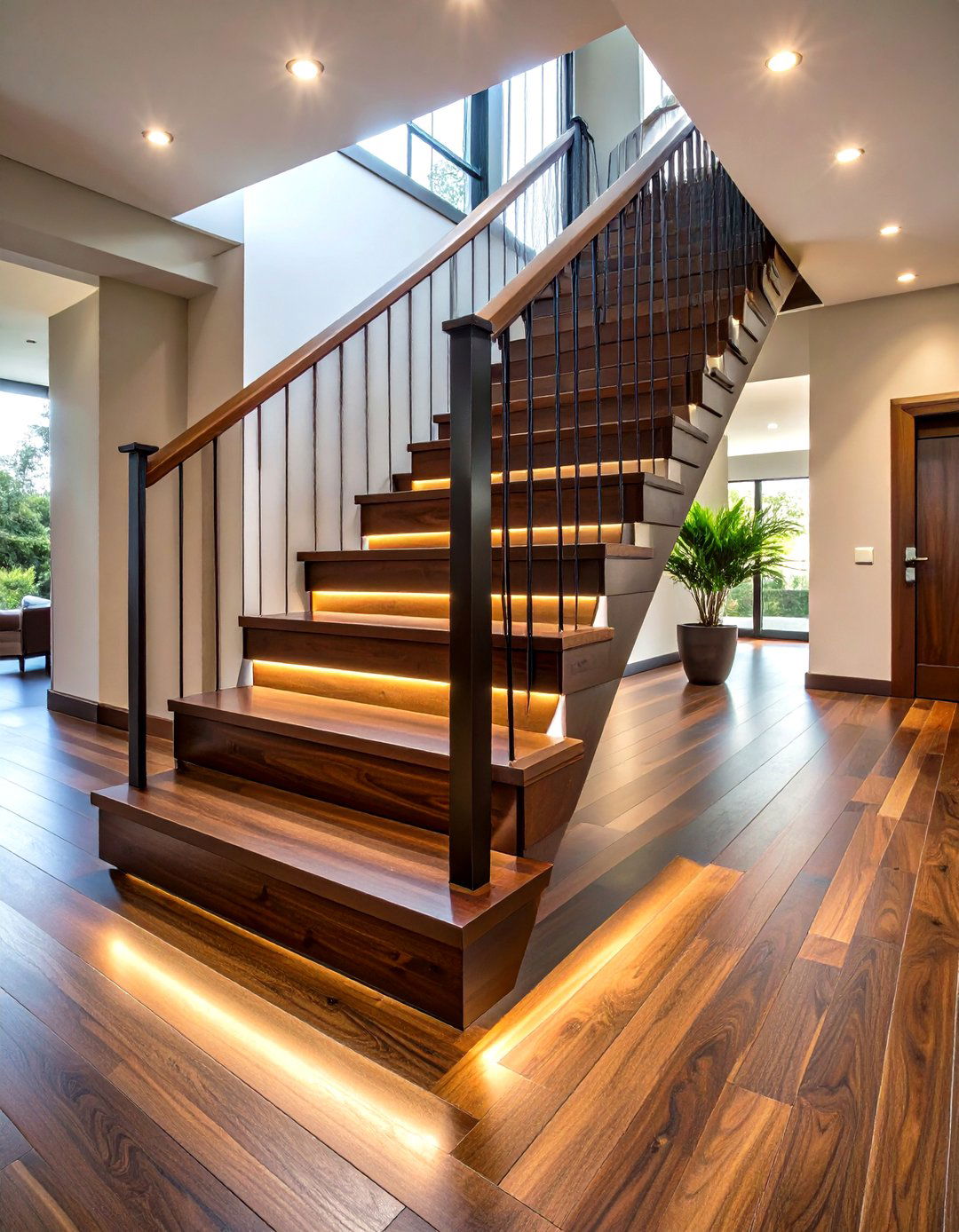
A staircase clad in the same dark walnut floor planks as adjoining rooms creates a seamless vertical flow. Mills offering custom walnut treads match grain and stain so risers read like one sculptural ribbon. Add slim black steel balusters for a contemporary twist; their negative space spotlights the wood rather than crowding it. For safety, apply coordinating anti-slip strips that disappear into the satin finish underfoot. Motion-sensor LED strip lighting beneath each stair lip both dramatizes the ascent and prevents midnight missteps.
15. Low-Glare Matte Dark Walnut Floor Calms a Sunroom
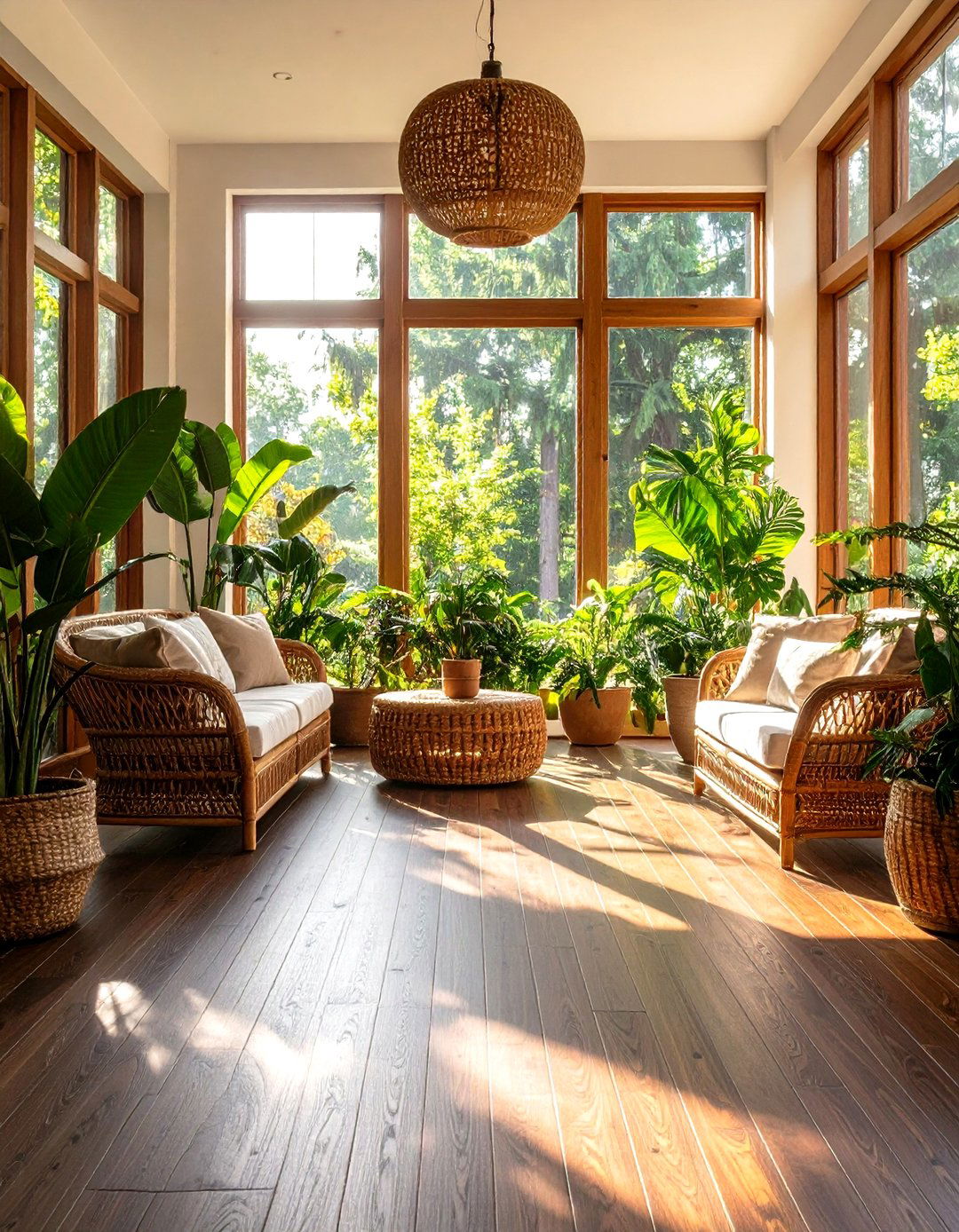
At the height of afternoon sunshine, a matte dark walnut floor cuts reflections that might otherwise wash out a sunroom’s vibrant upholstery, and flooring guides confirm matte’s superior glare control over satin. Treat boards with UV-blocking oil to prevent fading where rays stream strongest. Weave rattan seating, leafy plants, and linen cushions for a resort-like retreat, letting walnut’s chocolate backdrop anchor the casual mix. Slide furniture on felt-bottom glides to protect the soft matte surface during seasonal rearrangements.
16. Border-Inlaid Dark Walnut Floor Elevates a Transitional Hallway

To wrap things up in a high-traffic corridor without overwhelming narrow walls, craftsmen often inlay a lighter-oak border around a field of dark walnut floor planks. This subtle contrast frames the walkway and references classic parquet without resorting to full patterned blocks. Guides to herringbone and other layout hybrids note that mixing plank and pattern can maximize tight footprints and still feel current. Finish both species in a unified satin sheen for cohesion, then mirror the two-tone theme in stair runner trim for a designer’s-eye through-line.
17. Accent Lighting Highlights a Dark Walnut Floor’s Grain at Night
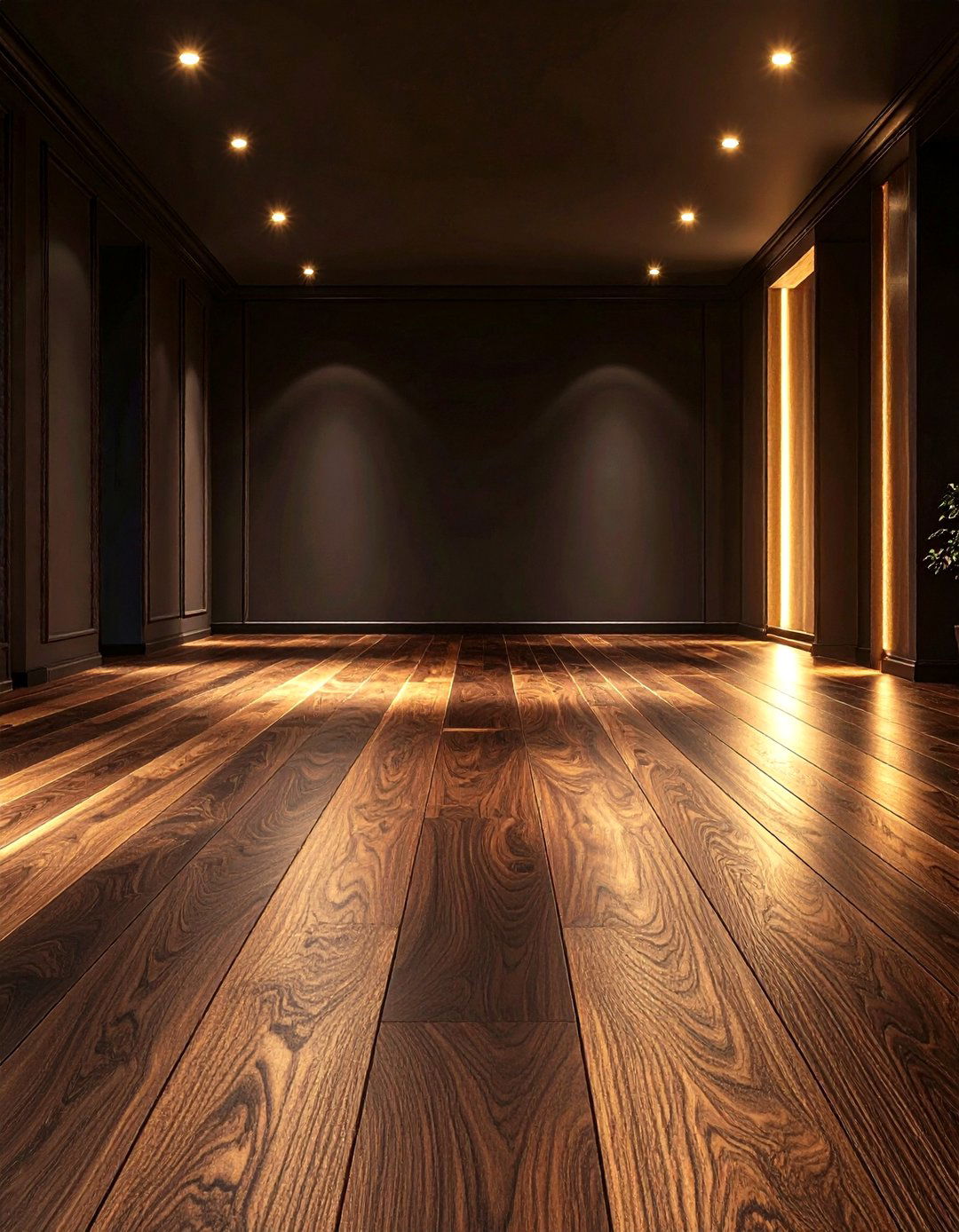
Strategic uplighting along baseboards casts gentle shadows that reveal the cathedrals and swirls unique to every dark walnut plank. Wide-board collections specifically promote dramatic grain as a selling point worth spotlighting after dusk. Install low-profile LED tape with warm-white bulbs (2700 K) so the chocolate tones read rich, not orange. Dimmer switches let homeowners dial ambiance from movie-night moody to cocktail-party sparkle while keeping overhead fixtures off and reflection to a minimum.
18. Gray-Washed Dark Walnut Floor Modernizes an Urban Loft
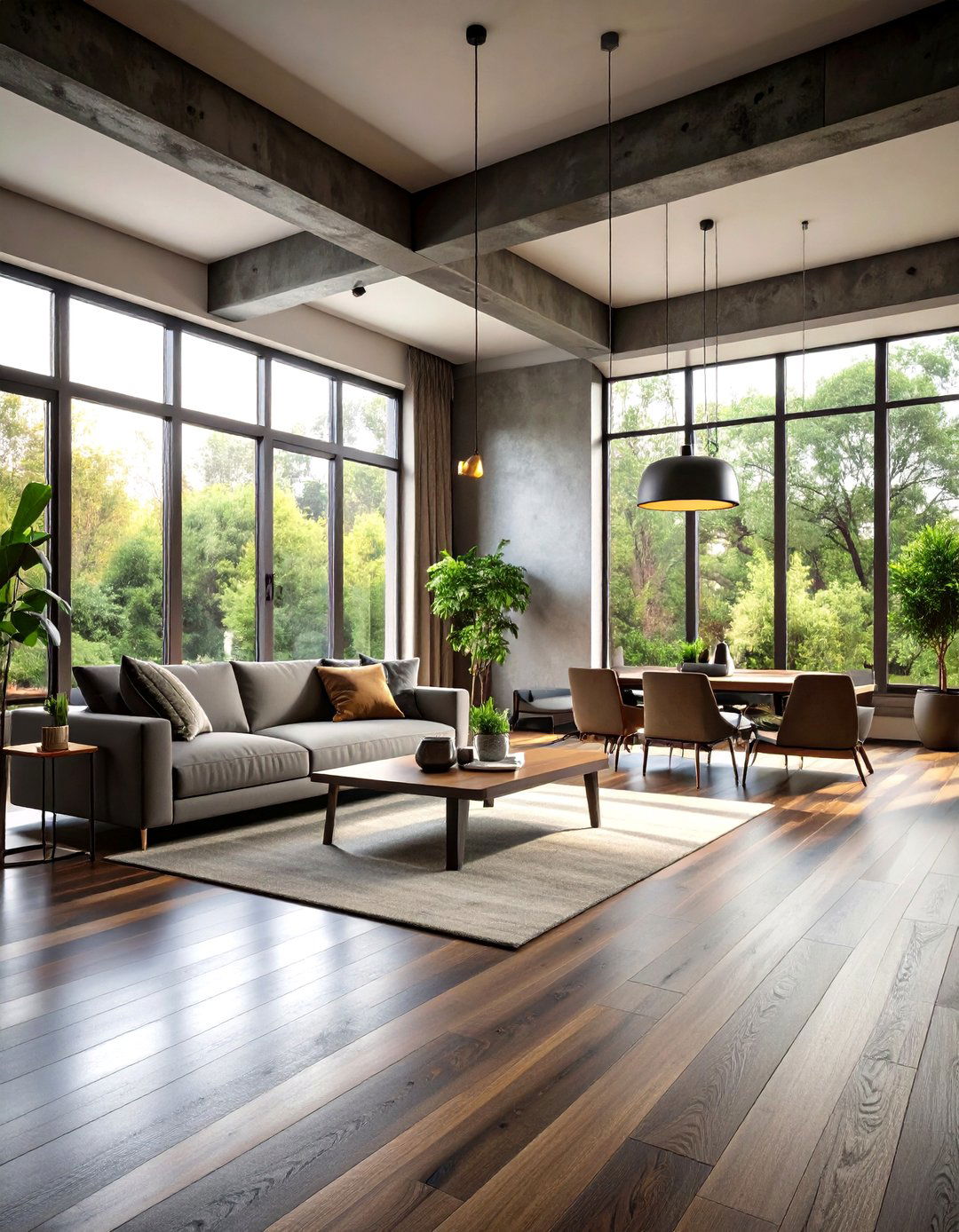
Design forecasters list subtle gray washes over dark walnut floors as a rising favorite in 2025 because the cool overlay mutes red undertones and blends with concrete or exposed brick Elmwood Reclaimed Timber. Choose penetrating stains that leave grain visible rather than opaque paints, then seal with extra-matte polyurethane for an industrial edge. Echo the smoky hue with graphite window frames and pewter textiles, balancing the loft’s raw surfaces against walnut’s intrinsic warmth so the space stays inviting, not austere.
19. Dark Walnut Floor Grounds a Grand Home Library
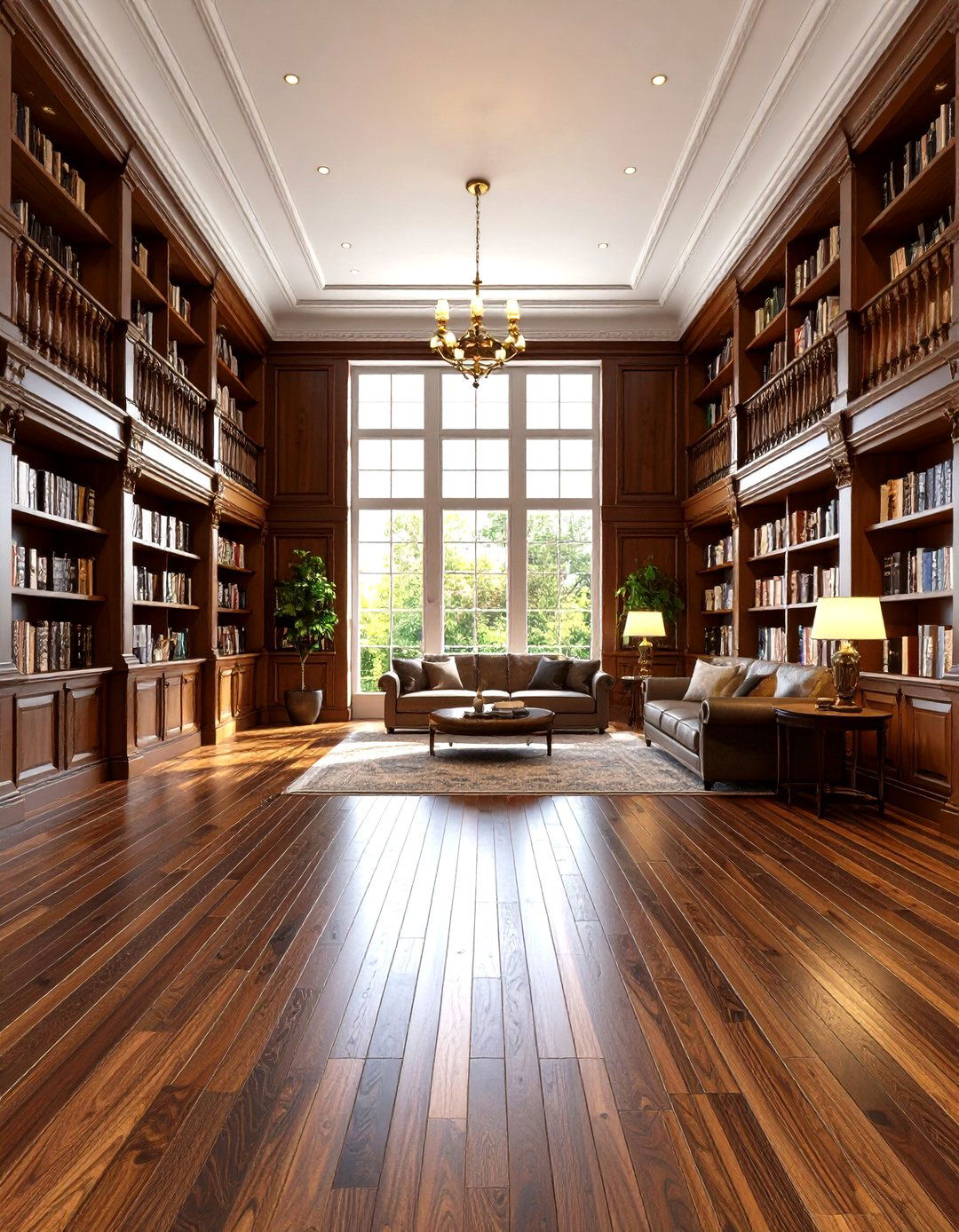
A home library lined with floor-to-ceiling shelves is instantly given gravitas when anchored by a dark walnut floor, a finish trend commentators say exudes heritage while accommodating modern comforts. Install acoustic underlayment beneath planks to muffle footsteps, enhancing the room’s hushed atmosphere. Brass picture lights above bookcases bounce soft glow onto walnut’s satin sheen, and a Persian rug centered beneath a leather wing chair adds plushness without concealing the wood’s beauty around the perimeter.
20. Engineered Dark Walnut Floor Tames a Basement Media Room

Basements battle moisture swings, making engineered dark walnut floors safer than solid planks thanks to their cross-ply cores, maintenance guides advise Flooring Inc. Bruce Floors. Select a product with a water-resistant core and click-lock edges to speed installation over vapor barriers. The flooring’s deep hue reduces screen glare during movie marathons, while integrated sound-deadening pads hush subwoofer rumbles. Keep a microfiber dust mop nearby; weekly passes prevent abrasive grit from dulling the protective finish in a space where snacks and traffic abound.
Conclusion:
From herringbone foyers that feel twice their size to radiant-ready spa baths that stay toasty underfoot, dark walnut floors prove remarkably versatile across every room. Choosing the right plank width, sheen, pattern, and maintenance routine lets you celebrate walnut’s rich grain while adapting to family life, pets, or sustainable priorities. Whether you crave farmhouse charm, Scandinavian lightness, or industrial polish, these twenty ideas show how dark walnut floor designs can ground your style today and evolve gracefully for decades to come.


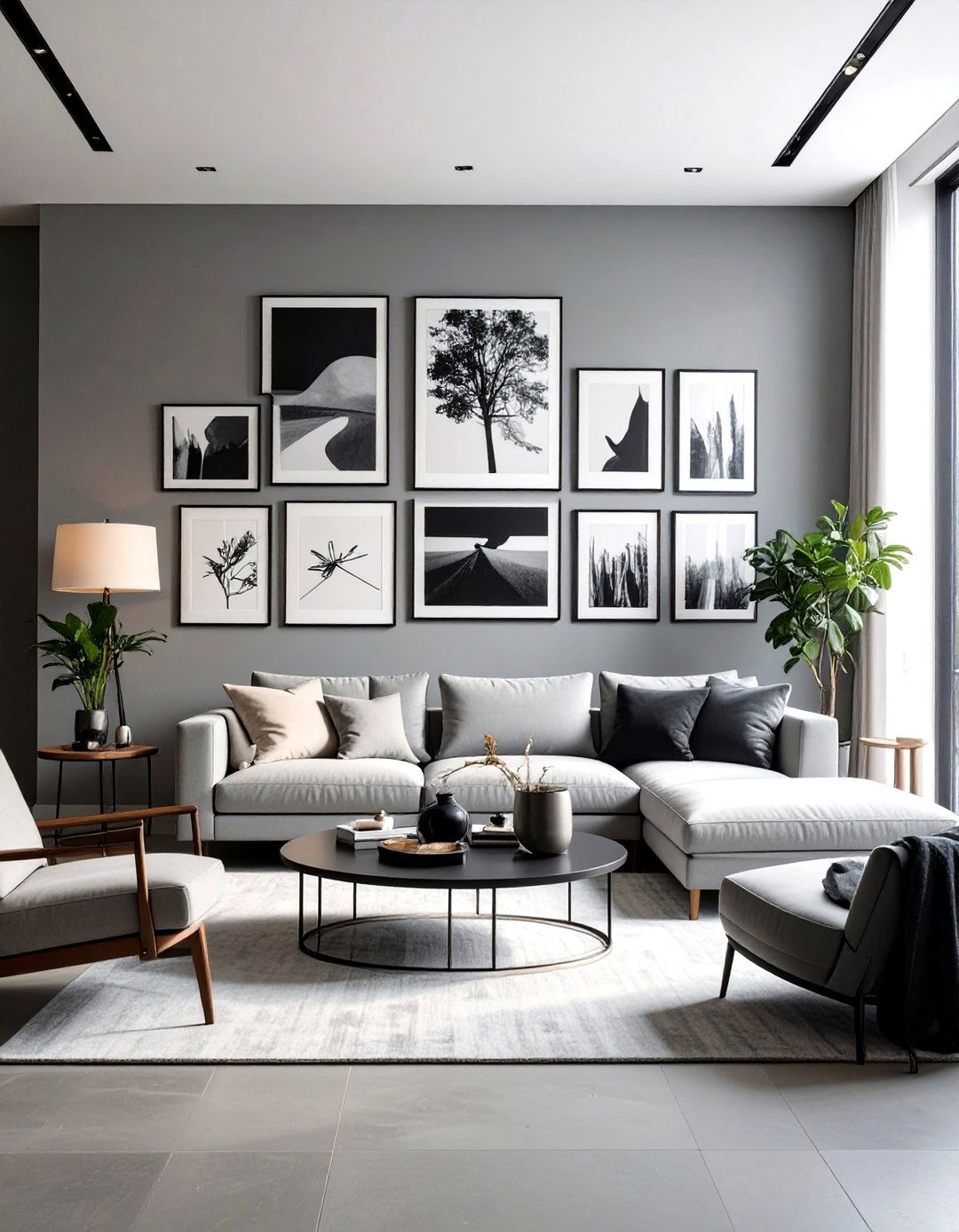
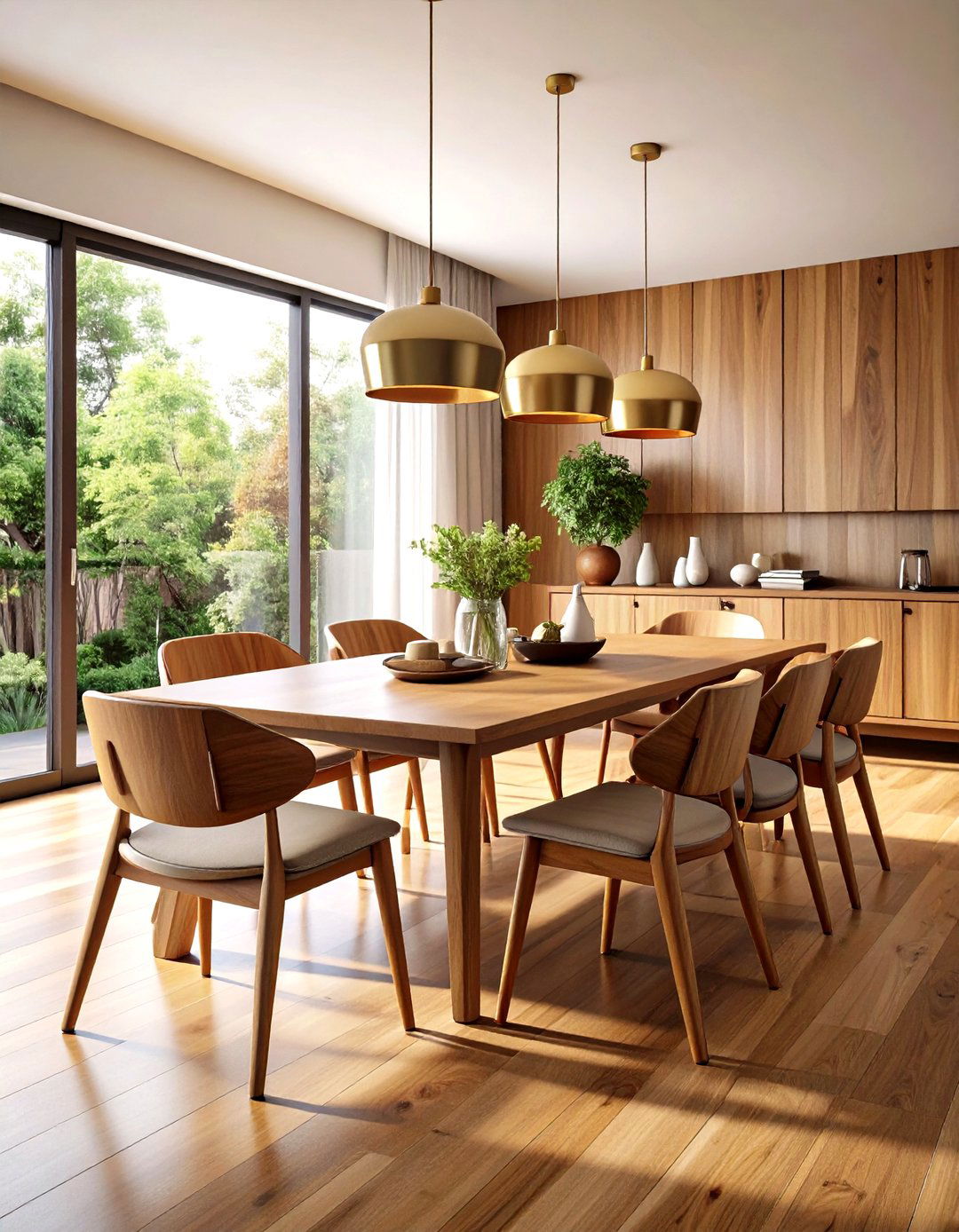
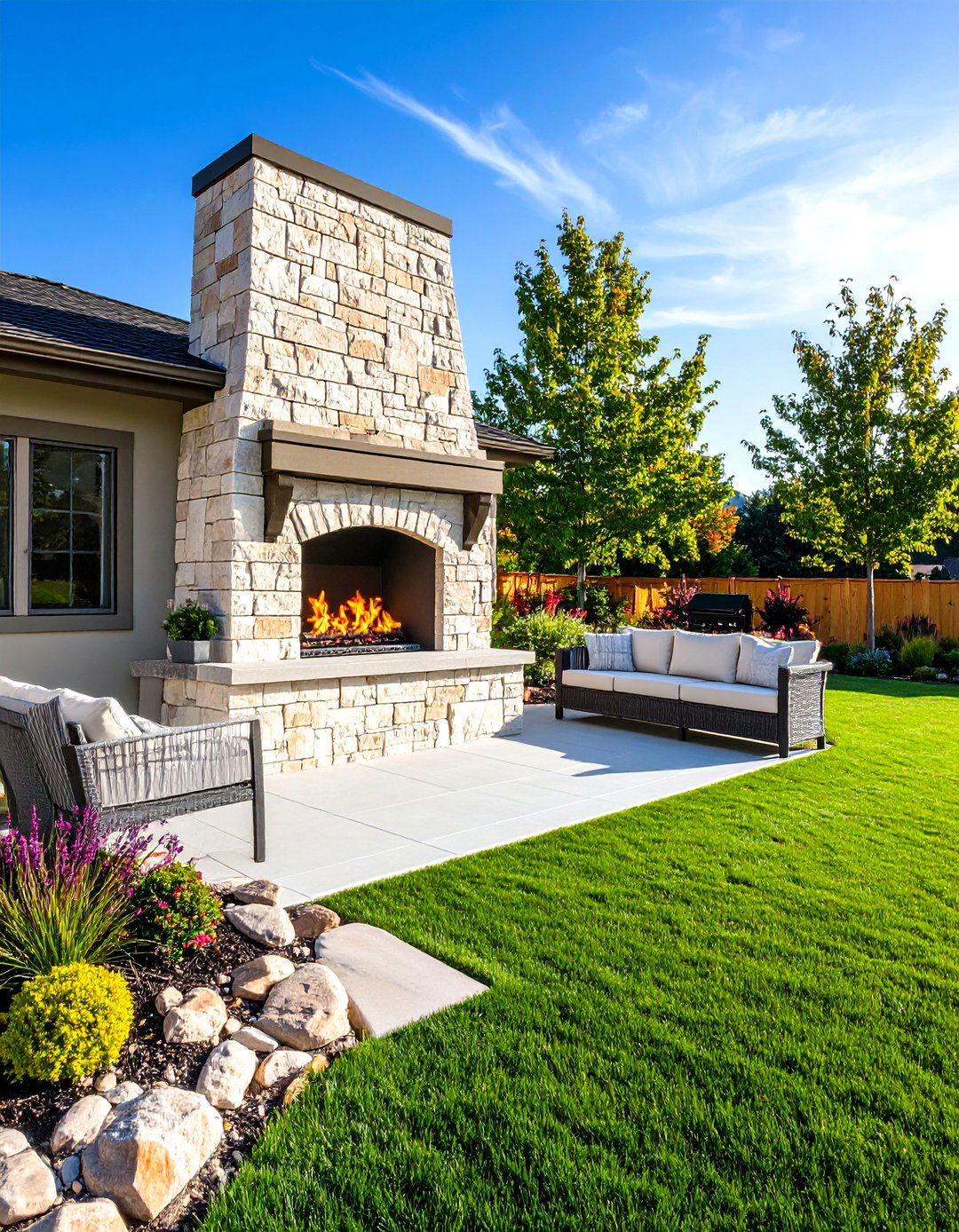
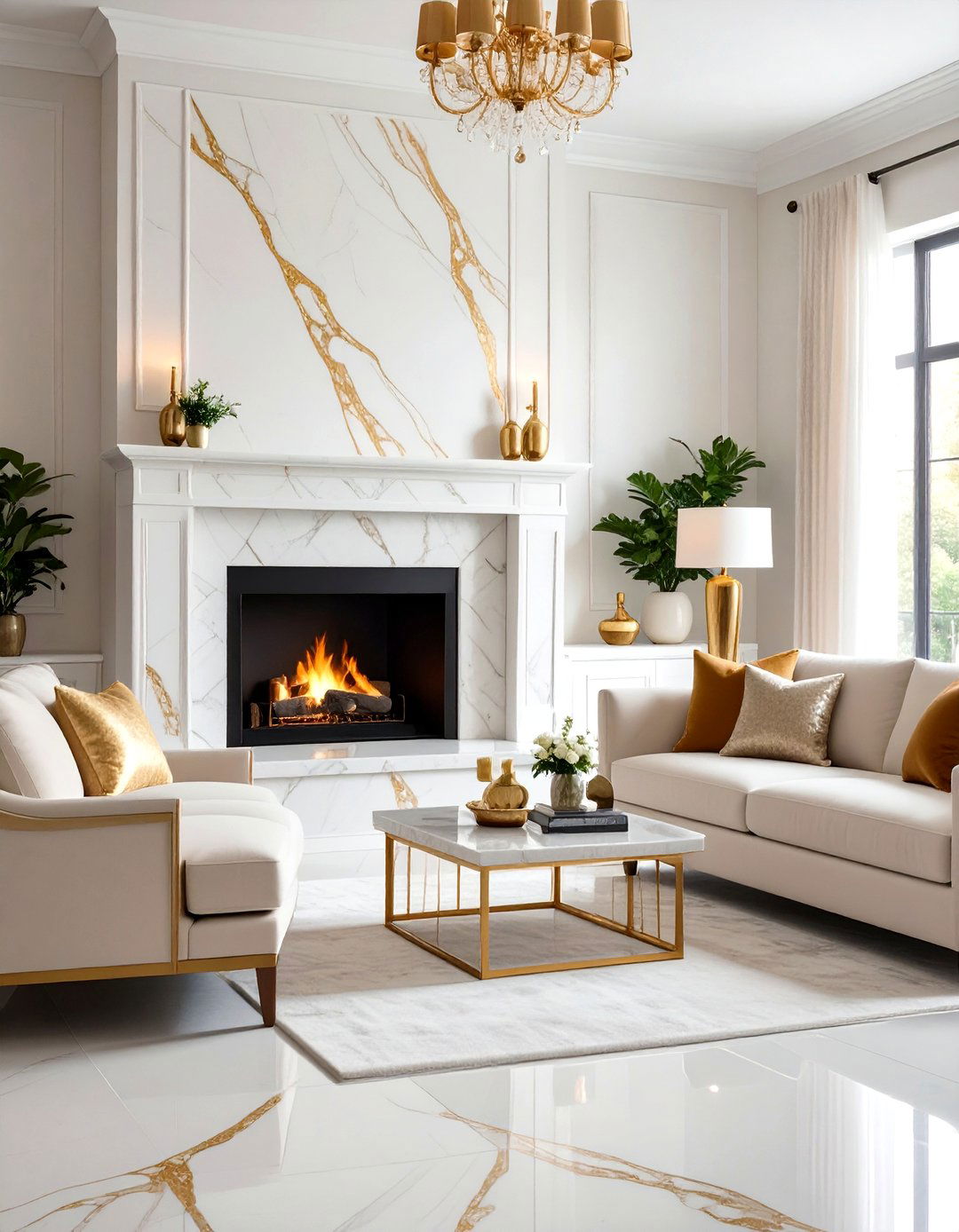
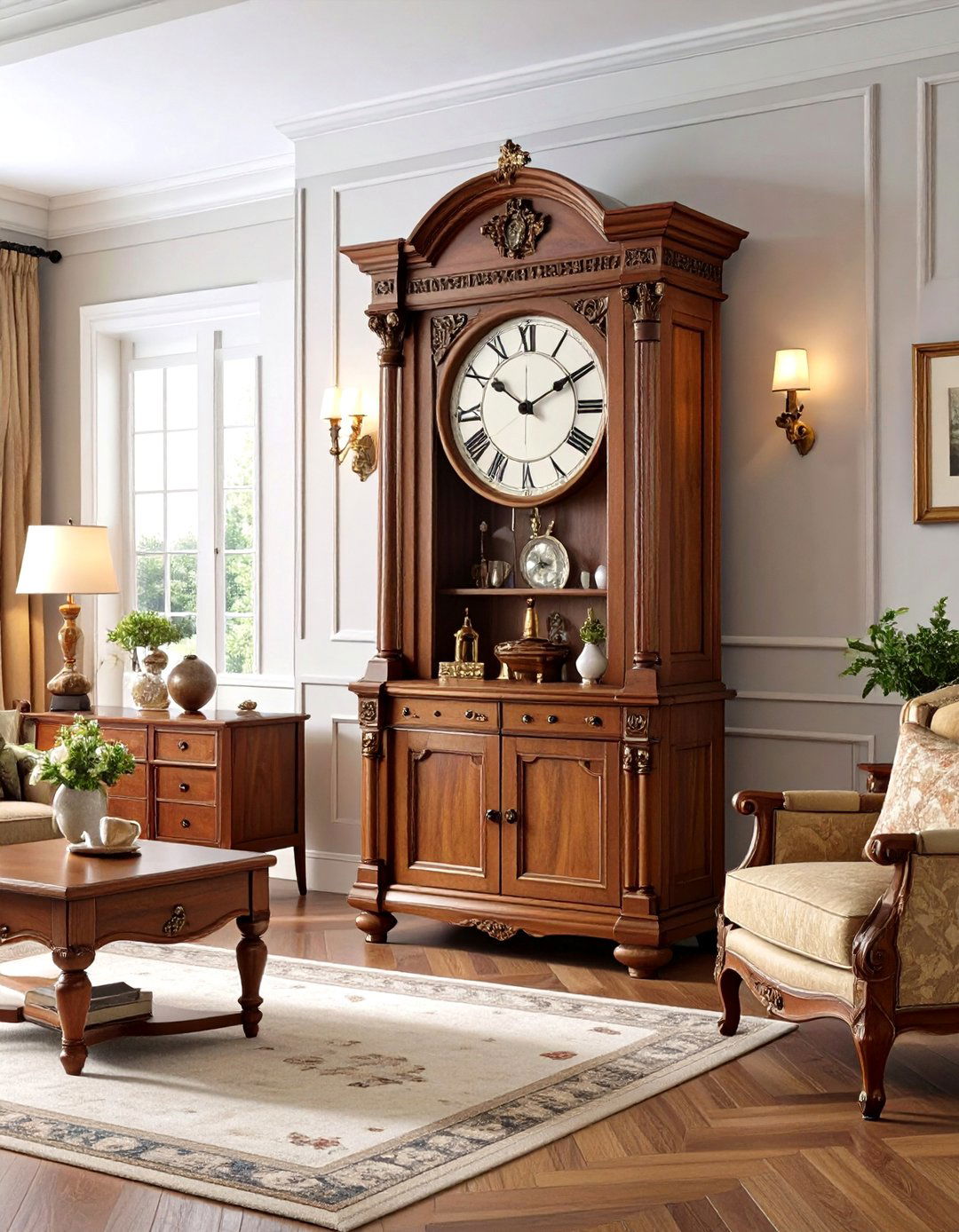



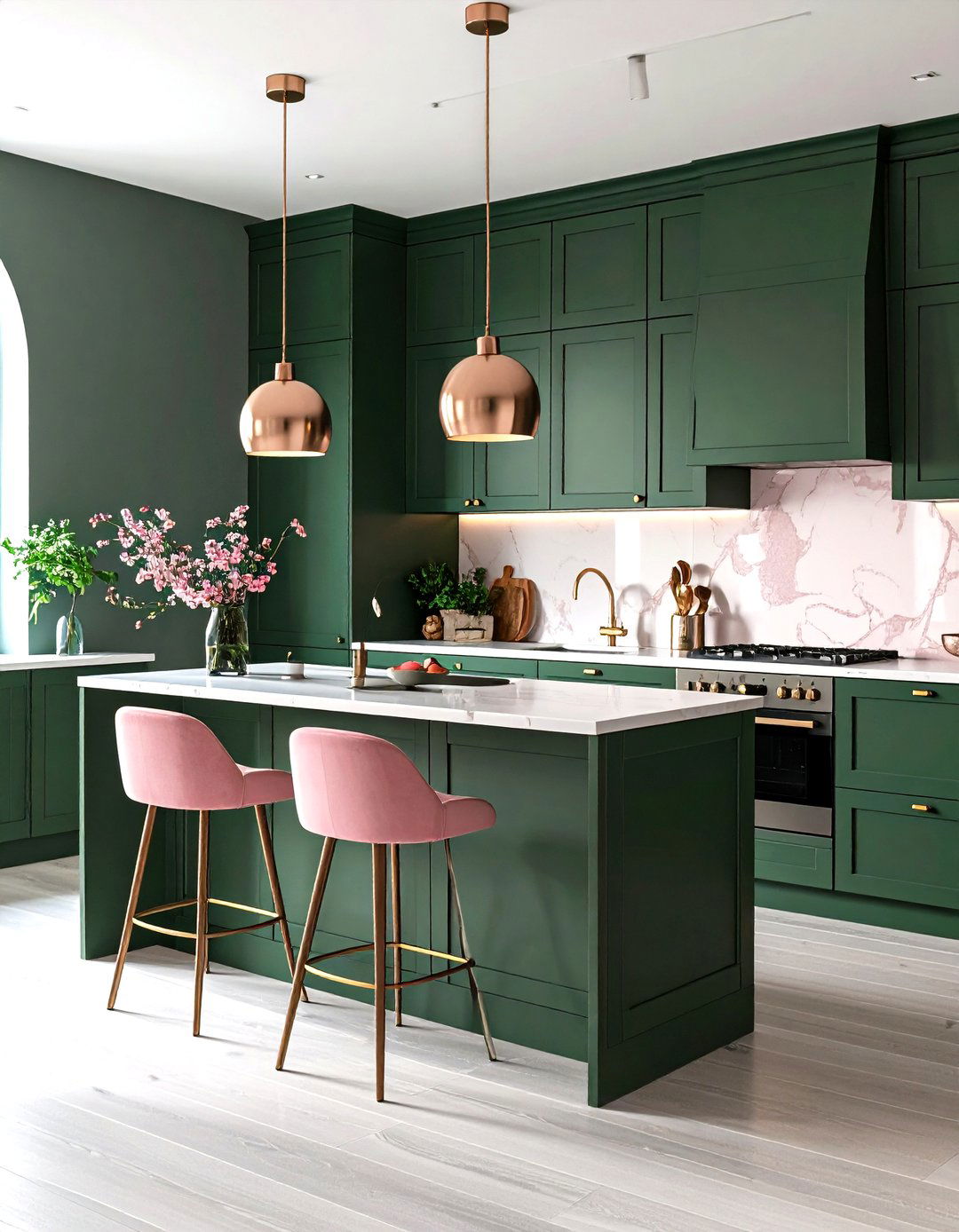
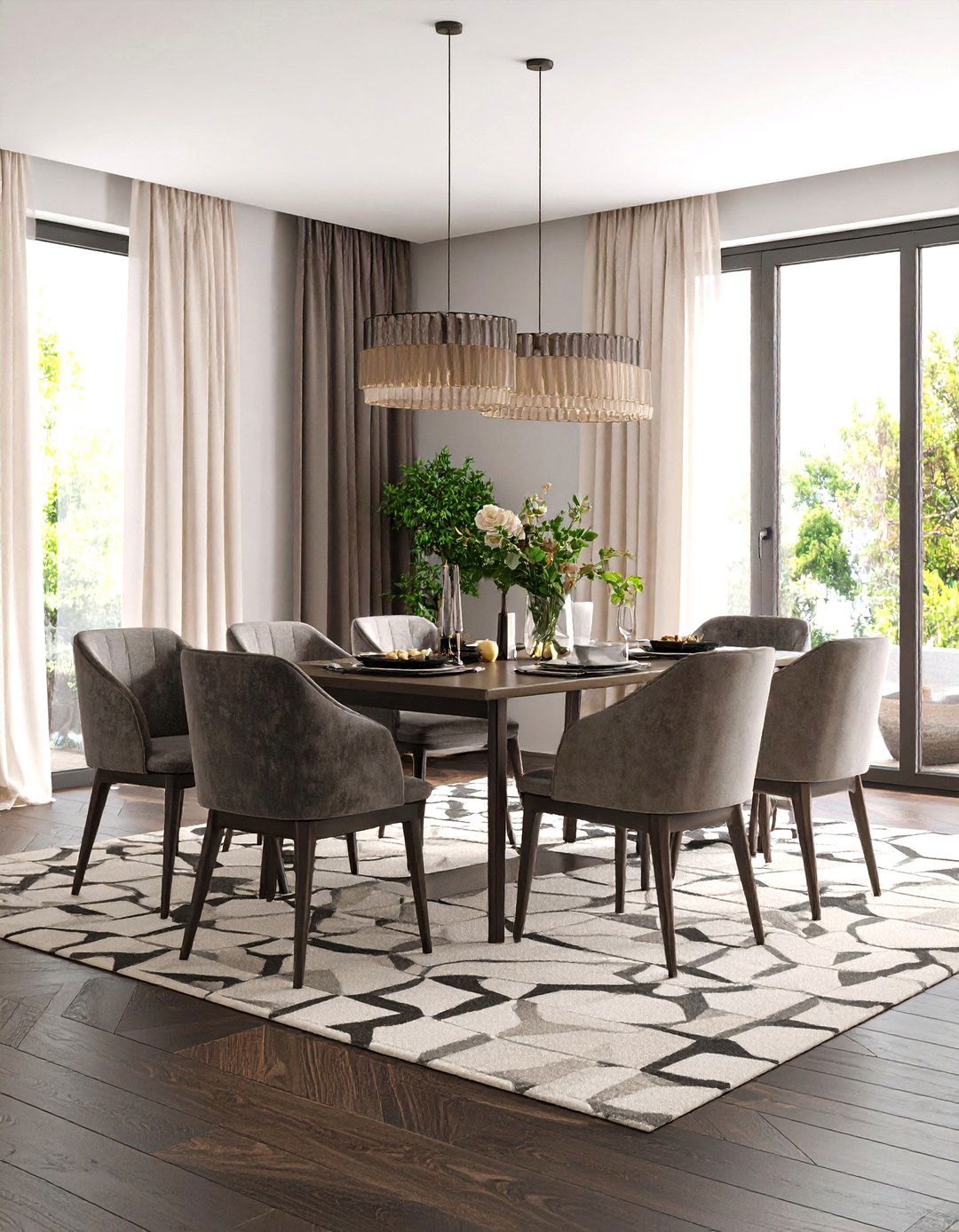
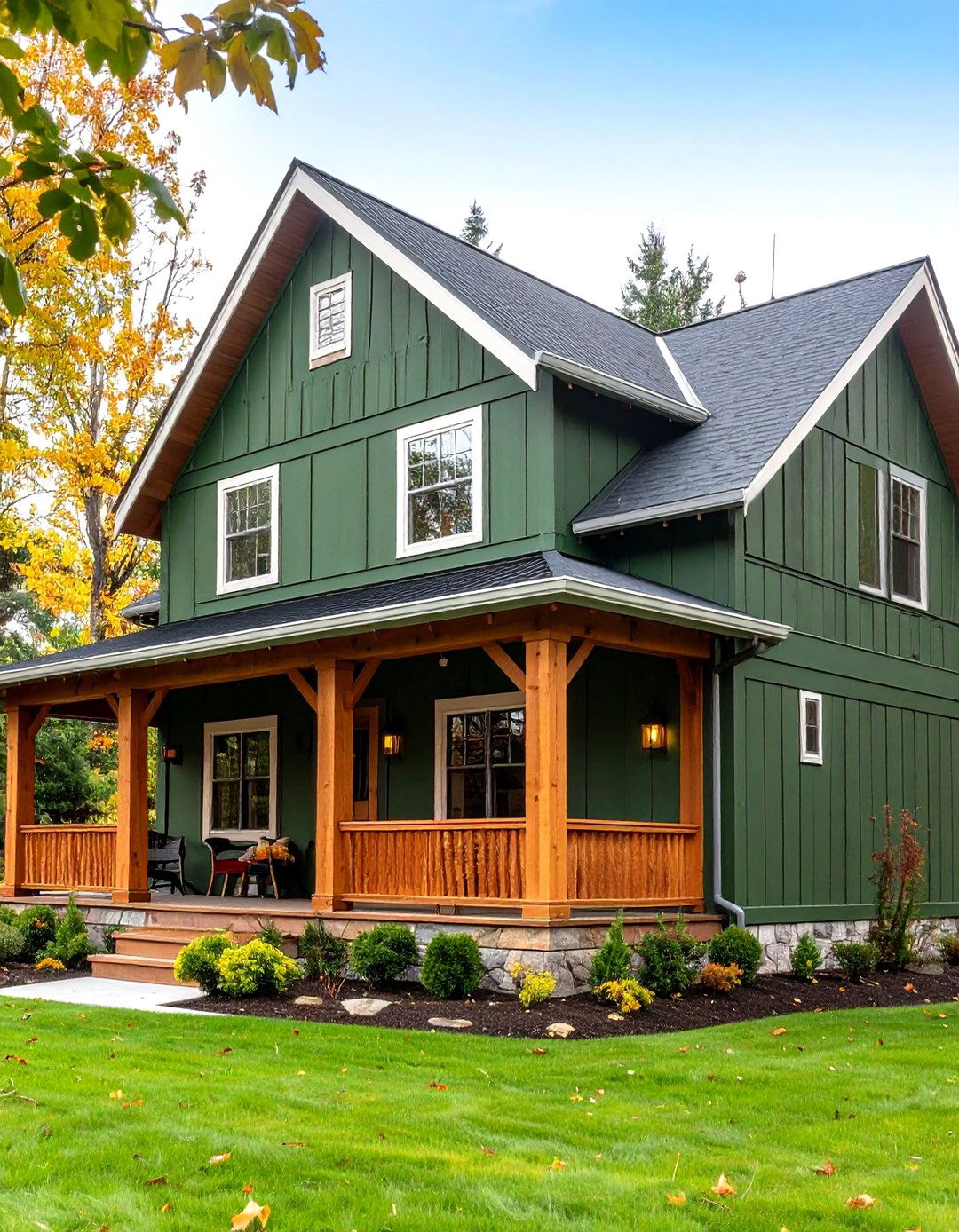
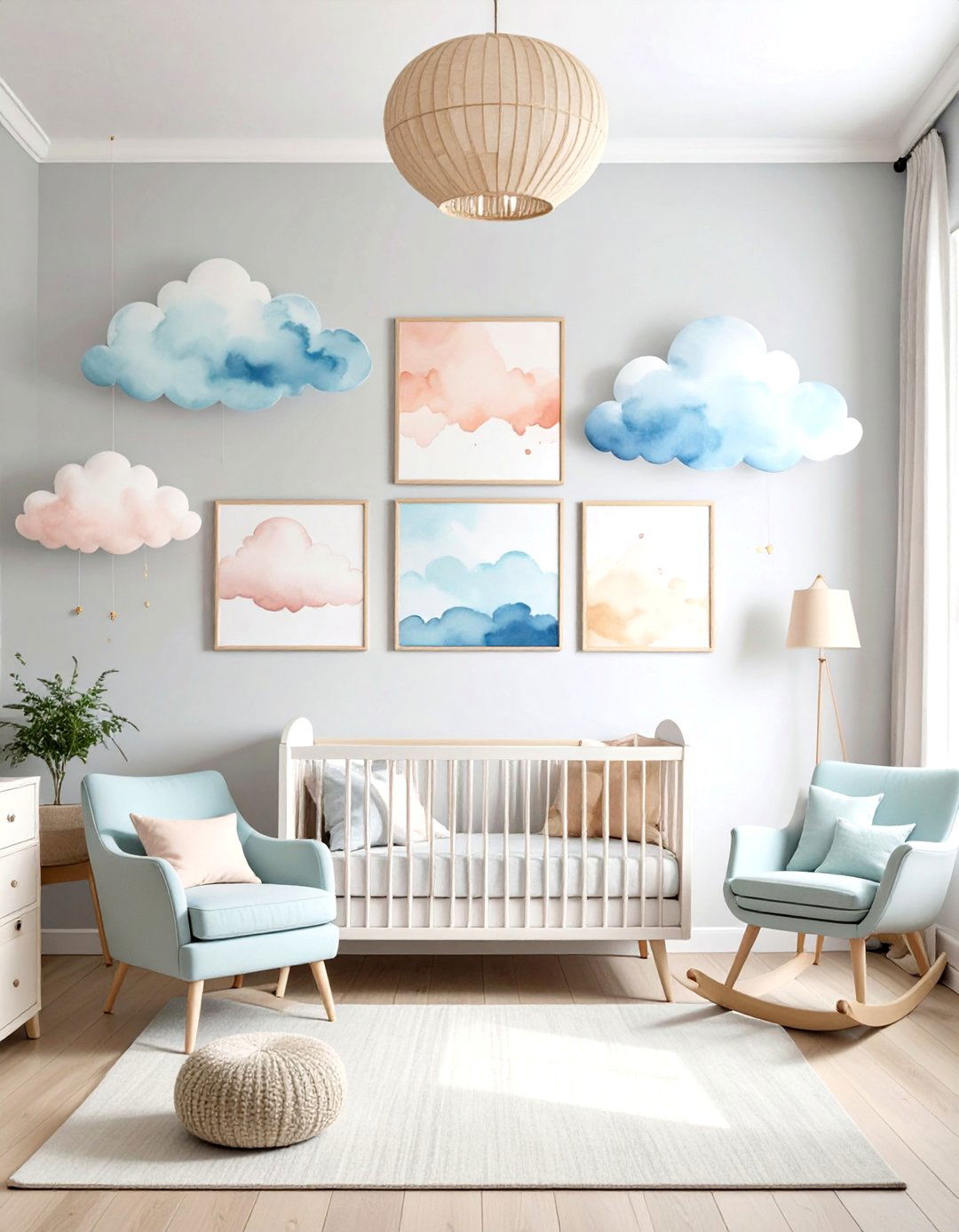



Leave a Reply